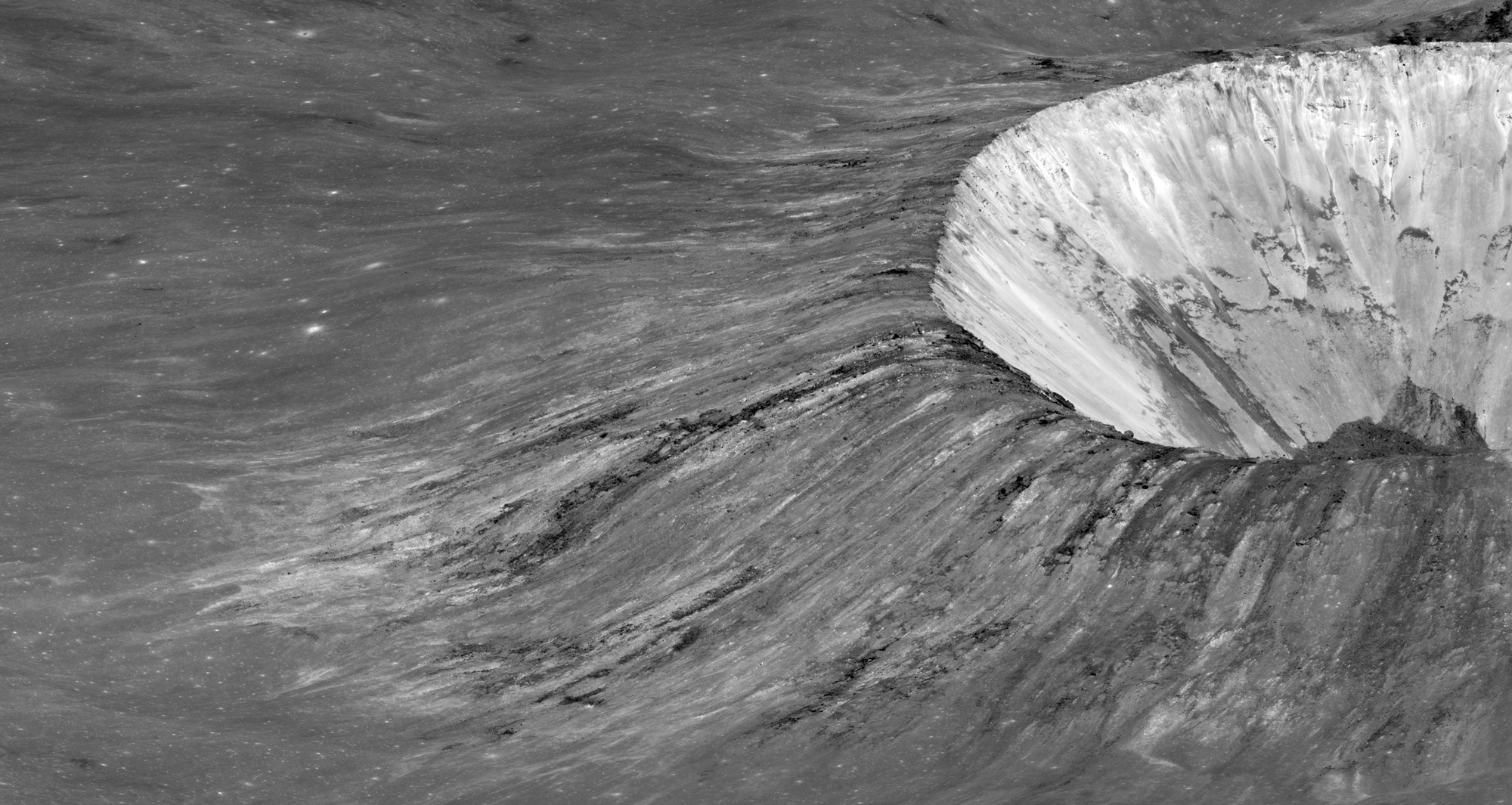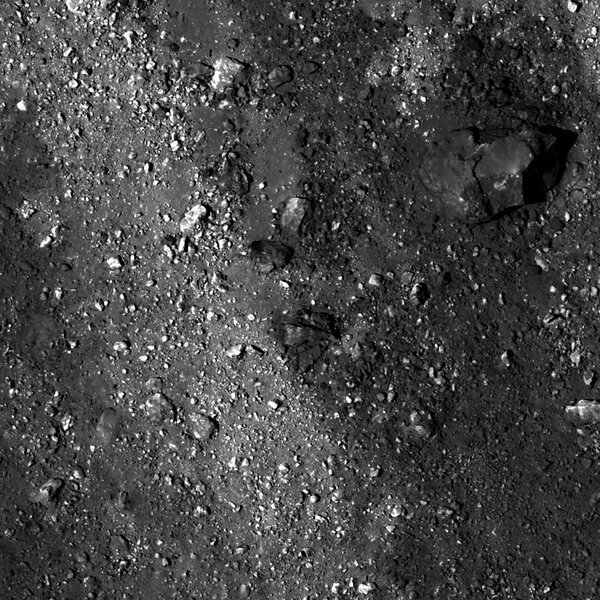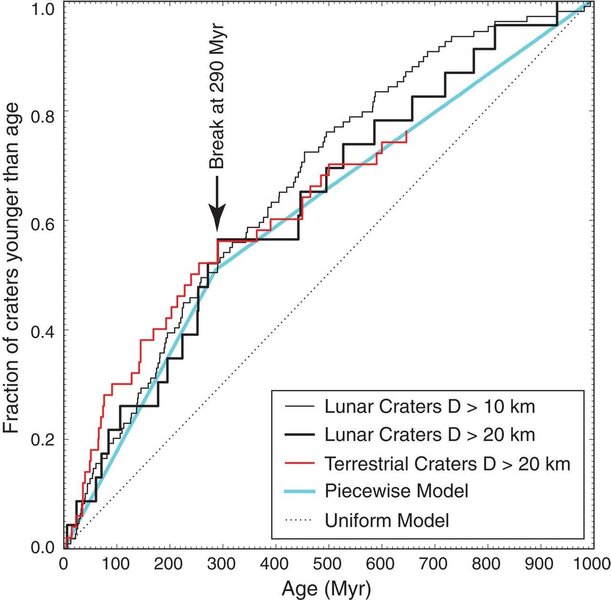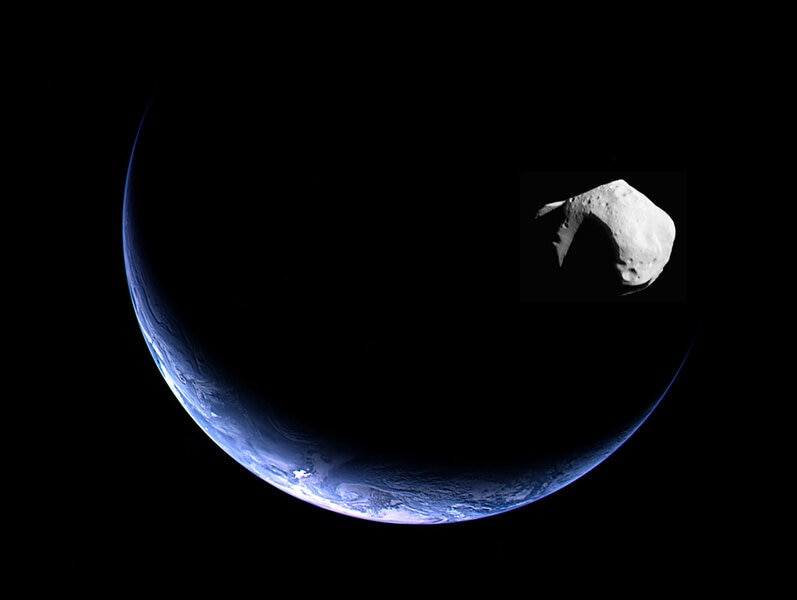Create a free profile to get unlimited access to exclusive videos, sweepstakes, and more!
Earth's asteroid impact rate took a sudden jump 290 million years ago

Looking at impact craters on both the Earth and Moon, a team of scientists found that there may have been a sudden increase in big impact events starting around 290 million years ago. At around that time, they think, asteroid impacts became as much as 2.6 times more common.
That’s a big jump.
Mind you — because some folks worry about this sort of thing — this doesn’t affect anything now. It’s not like we’re suddenly seeing more than twice as many impacts since, like, yesterday. We’re talking about an increase that started before the dinosaurs even got their start.
But why? And how did they figure this out?
Second things first. We know that there’s a lack of old craters on the Earth, and it’s always been assumed that’s due to erosion. Wind, water, geologic activity: Over long stretches of time our Earth remakes itself, scrubbing the surface of blemishes like impacts*.
But the evidence for this is lacking. That’s what initially motivated the scientists, to try to see if there’s a way to support this idea. So they looked to the Moon. Our satellite is in the same region of space we are, so should get hit at very close to the same rate as Earth does. The idea is to look at big craters on the Moon, figure out a way to get their ages, do the same on Earth, then compare the two and see what you find.
The problem is getting the lunar crater ages, since very few have absolute ages found for them. But they came up with a clever idea. In a big impact, one that leaves a crater 10 kilometers across or wider, rocks from the lunar bedrock get ejected from the explosion and deposited around the crater. Over long periods of time these erode. Not due to air or water, of course, since the Moon doesn’t have those.
Instead, they erode from tiny micrometeorites raining down constantly. These sandblast the rocks, slowly wearing them away (this doesn’t happen on Earth because our atmosphere stops them). Also, the temperature change from day to night on the Moon is hundreds of degrees Celsius. The rocks are constantly expanding and contracting from this, which causes them to crack and erode.
They figured that by looking at the abundance of rocks around a crater compared to the fine powdery eroded rock material (called regolith), they can get a relative age; craters with more intact rocks are younger, and ones with more eroded ones are older.
The Lunar Reconnaissance Orbiter is mapping the lunar surface, and has an instrument on board called DIVINER which maps in the infrared. Just after sunset in a spot on the Moon, the rocks will still be hot while the more insulating regolith won’t be. That can be used to get the rock abundance and the relative ages of craters.
They did this for over 100 craters, and also included a handful of craters whose absolute ages were known from other methods. That changed their relative scale to an absolute one, giving them the actual ages of all their craters.
What they found is very interesting indeed. There’s a split in ages of the craters; for a given size there are many more younger craters than older ones. That split occurs about 290 million years ago, implying the moon started to get hit 2.6 times as often starting back then.
Here’s the thing: They found the same relation on Earth! Looking at big craters in stable regions on Earth (where erosion isn’t as big a problem), they found that there is a sharp increase in impacts around 290 million years ago, by about the same rate as on the Moon.
This strongly implies that erosion is not why we see fewer older craters, but that it represents an actual increase in impacts starting at that time. To be sure, though, they turned to geology.
Kimberlite is a mineral formed in the upper layer of the Earth’s mantle (as much as 450 km below the surface), which can rise rapidly through the crust in explosive volcanic eruptions. It can be found in vertical structures in the crust called pipes. What the scientists found is that in stable regions of the crust, pipes can be found that are very old, showing that erosion didn’t seem to affect them. But in those same regions they found impact craters still showed that rapid increase at 290 million years ago. If erosion were to blame for that, the older pipes should be eroded as well and less common, but that’s not the case.
It looks like there really was an increase in asteroid impacts starting at roughly the end of the Paleozoic Era 290 million years ago. I’ll note that some other scientists had some issues with the methods of the first team, but the first team has responded, rebutting those claims.
So what could be the reason behind this uptick in impacts? The simplest explanation is that there must have been some sort of event out in the asteroid belt, probably a major collision, that created a new population of asteroids that moved inward toward the Sun and started hitting us back then. We know this sort of thing can happen; many asteroids belong to families, or groups, that have similar orbital characteristics, meaning they were probably all part of a parent asteroid that suffered a big impact, spreading them out.
Likely that’s what happened some 300 million years ago, and not much later they started raining down on Earth.
Big asteroid impacts are rare events, and the only way to understand them is to dig down (sometimes literally) into the past over long periods of time. They tell us a lot about the Earth’s history and of course their danger to us now, but they can also tell us about what was going on in the solar system hundreds of millions of kilometers away, and hundreds of millions of years in the past, too.
And we’d never be able to figure this out if we weren’t mapping the Moon in detail and in different wavelengths of light. This is why we explore: To find ourselves back home and know it for the first time.
*Note that an old timey term for a crater is "astrobleme," literally "star wound," so my choice of words isn't really a joke.






























